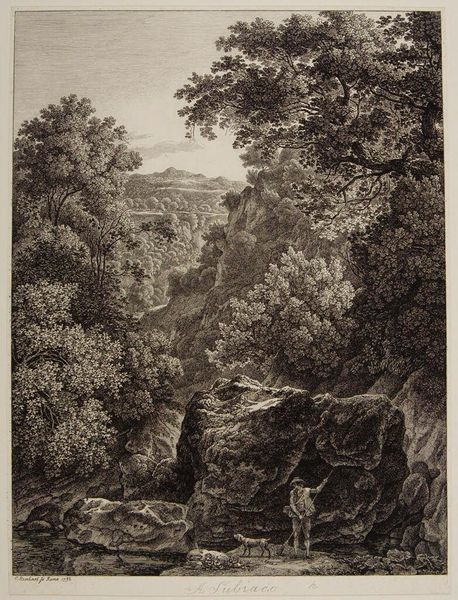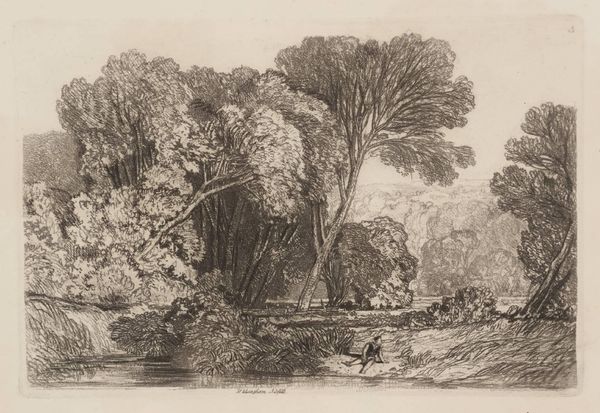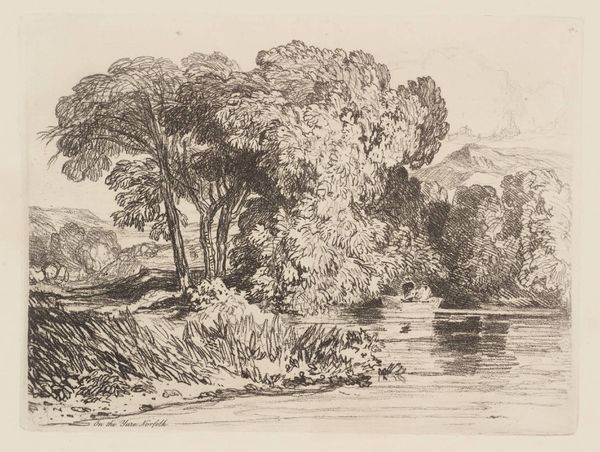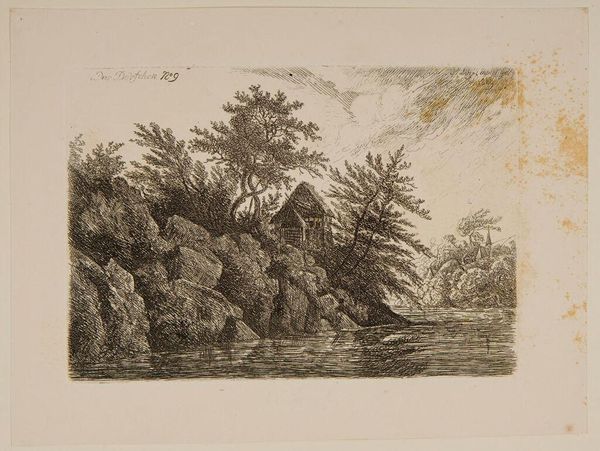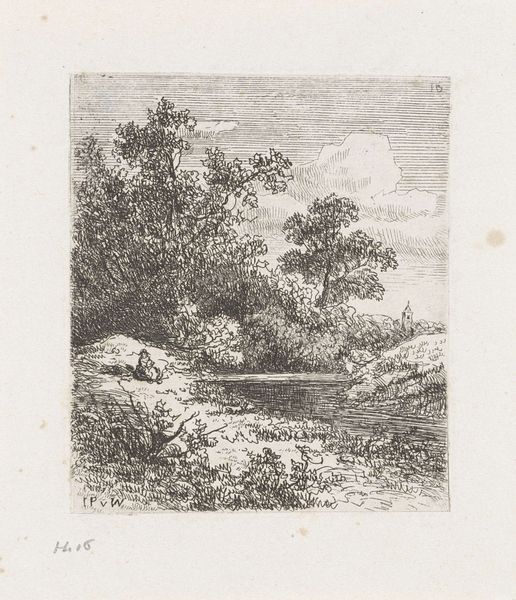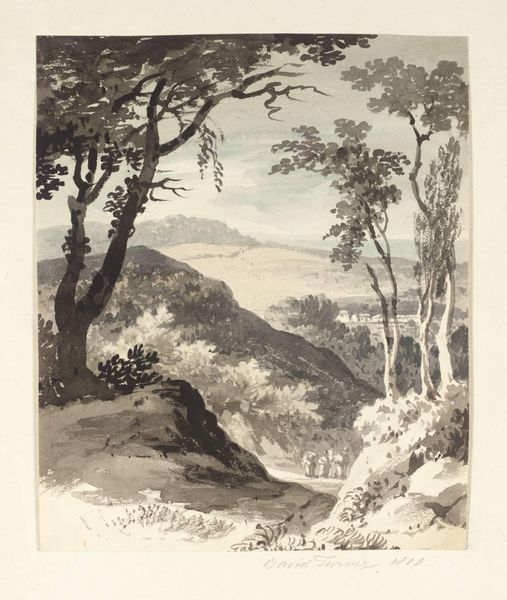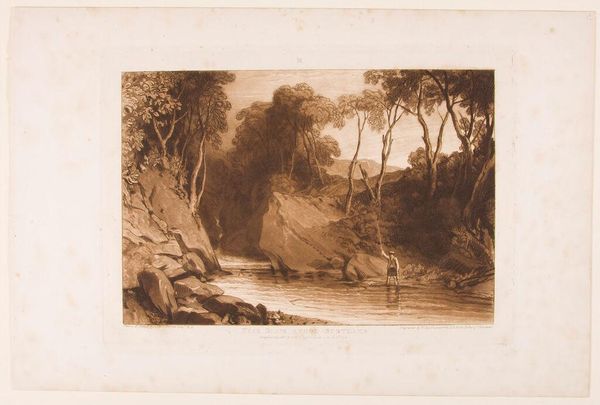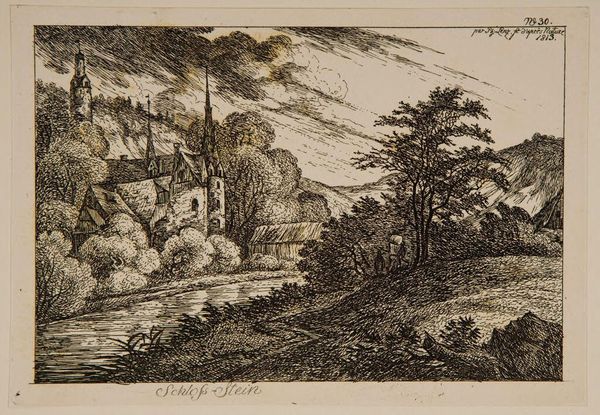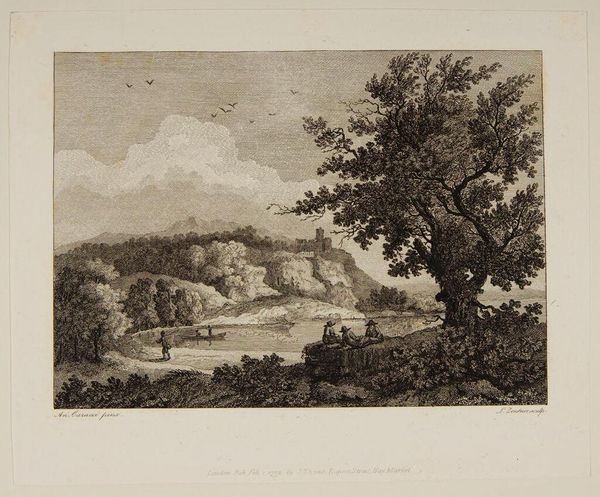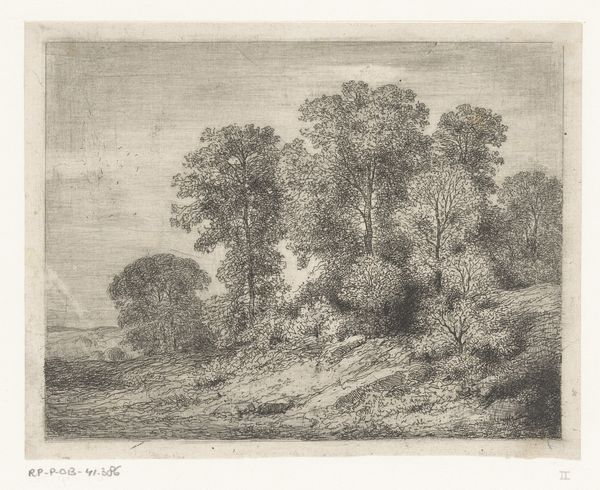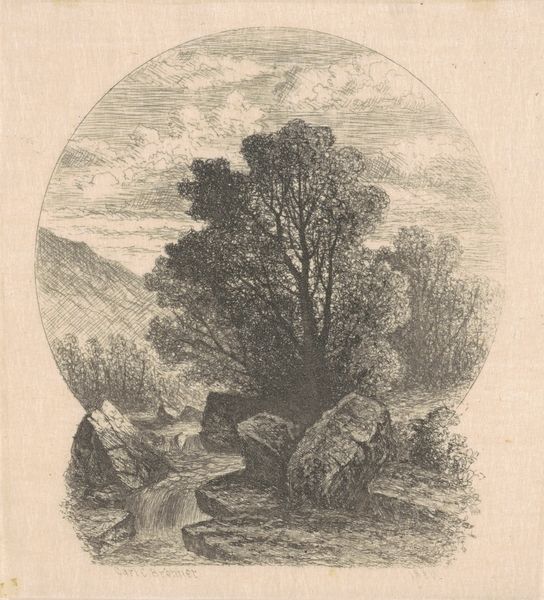
Copyright: CC0 1.0
Curator: Edmund William Evans’ “Ruins on the Bank of a River”, held here at the Harvard Art Museums, presents us with a tranquil waterside scene. Editor: Its graphic qualities evoke a quiet melancholy, don't you think? The monochromatic palette emphasizes texture and form. Curator: Indeed. The interplay of light and shadow creates a compositional harmony, directing the eye through the various planes. The artist's meticulous rendering of foliage and architecture is structurally sound. Editor: But those ruins, half-hidden by foliage… they speak to the theme of impermanence, the cyclical nature of history and memory reflected in the water. Curator: Perhaps. Or consider how the artist has resolved pictorial space with the repetition of vertical elements, trees echoing the architecture. Editor: True, but the figures by the water! They are symbolic of humanity's constant return to primal landscapes, finding solace amidst decay. Curator: A valid interpretation. It is the beauty of the artwork—a convergence of form and emotive narrative. Editor: Precisely. Evans offers a space where the observer reflects on time.
Comments
No comments
Be the first to comment and join the conversation on the ultimate creative platform.
